If you open a color catalog of almost any oil paint manufacturer in operation today you will probably find over 100 pigments available. This was definitely not the case in the 17th century. About only 20 pigments have been detected in Vermeer’s work.
The process of painting was a little bit more complex during Vermeer’s time in comparison to today. Certain pigments were not compatible with others and therefore had to be used separately or at different times during the process of the painting.
In this post we will be examining the colors Vermeer used in five of his paintings – ‘A Young Woman Standing at a Virginal’, ‘A Young Woman Seated at a Virginal’, ‘The Music Lesson’, ‘The Guitar Player’ and ‘Girl with a Flute.’
Vermeer’s Main Pigments on his Palette
- Ultramarine Blue
- Green Earth
- Vermillion
- Red Lake
- Red Earth
- Led Tin Yellow
- Yellow Earth
- Yellow Lake Pigment
- Bone Black
- Charcoal Black
- Lead White
Ultramarine Blue
Ultramarine blue was by far the most expensive of all the colors Vermeer used on his palette. The blue mineral pigment was extracted from the semi previous lapis lazuli and is often referred to as ‘blue gold’. Most artists used this pigment sparingly because of its steep price. However, Vermeer used it liberally in his work. He would mix it into various different areas around the painting – creating an overall unifying effect. There are areas where he would use the color in a more pure way such as the upholstery in ‘Young Woman Standing at a Virginal’, ‘The Music Lesson’, and the curtain behind the virginal in ‘Young Woman Seated at a Virginal’.
Despite the costly price of the color Ultramarine blue, it is not without its defects. Over time, the color can take on a blanched appearance – making the painting lighter than what the artist intended. So, what we are seeing today is a less vibrant Vermeer painting.
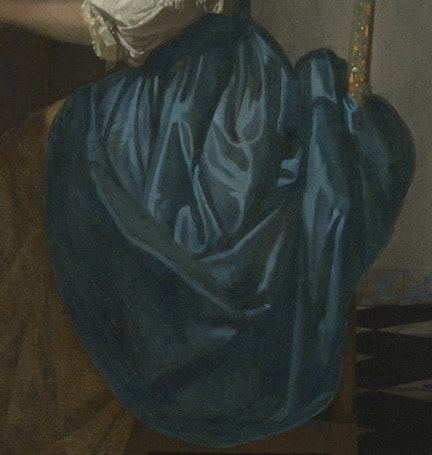
In the above detail you will notice a greenish Ultramarine in the skirt. Here Ultramarine has been mixed with Green earth to attain a greenish blue color. A more unusual combination!
Green Earth
This earth tone green color could be created from either celadonite or glauconite. Vermeer would often use it to create cool shadows on his figures.
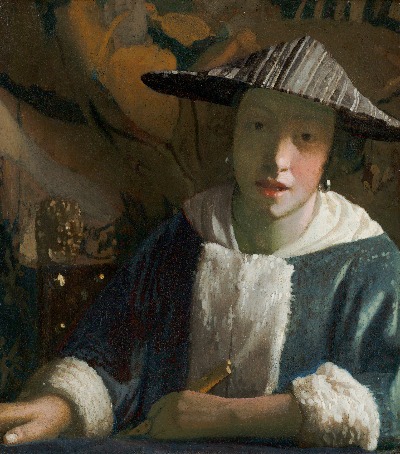
As you can see in the above Vermeer painting ‘Girl with a Flute’ the shadow side of the figures face (especially the neck) is greenish. This is an example of an area where Vermeer used green earth.
In the above detail of Vermeer’s ‘Young Woman Standing at a Virginal’ is yet another example of Vermeer using green earth. Here we see green earth mixed with some lead tin yellow to create the cool light that emanates from the window.
Lead Tin Yellow
Lead Tin Yellow was commonly used by Dutch painters in the 17th century, but appears to have disappeared from artists’ palettes by the 18th Century.
This lead tin yellow color was used for the multiple appearances of the yellow jacket as seen in ‘A Lady Writing a Letter’ and ‘Mistress and Maid’.

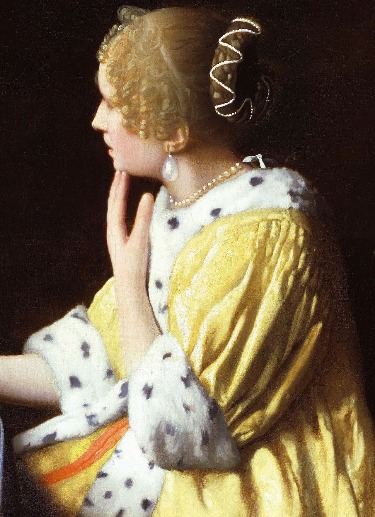
Yellow Lake
Yellow lake is made from a natural dyestuff obtained from the plant Dyer’s Rocket. It is considered the oldest European dye plant in the world. This color was usually mixed with other colors – to give greens and duller yellow pigments more life. It was usually not used as a yellow by itself.
The plant used for this dye is still grown commercially in Normandy. It is commonly used in silk dyeing.
Vermillion
Vermillion is a red mercuric sulphide pigment made from finely ground cinnabar. It is an intense red color found in historical painting since antiquity. Real Vermillion paint is quite expensive to purchase!
Accents of Vermillion red are generally applied sparingly in the following of Vermeer’s paintings: ‘Young Woman Seated at a Virginal’, ‘The Music Lesson’, ‘The Guitar Player’, and ‘The Music Lesson.’
The pigment was also used to produce the bright orange color that appears in the corner of the lid of the virginal in the painting ‘A Lady Standing at a Virginal.’
I hope you enjoyed this overview of some of Vermeer’s colors! If you enjoyed this you might also enjoy 5 techniques you could learn from Rembrandt.

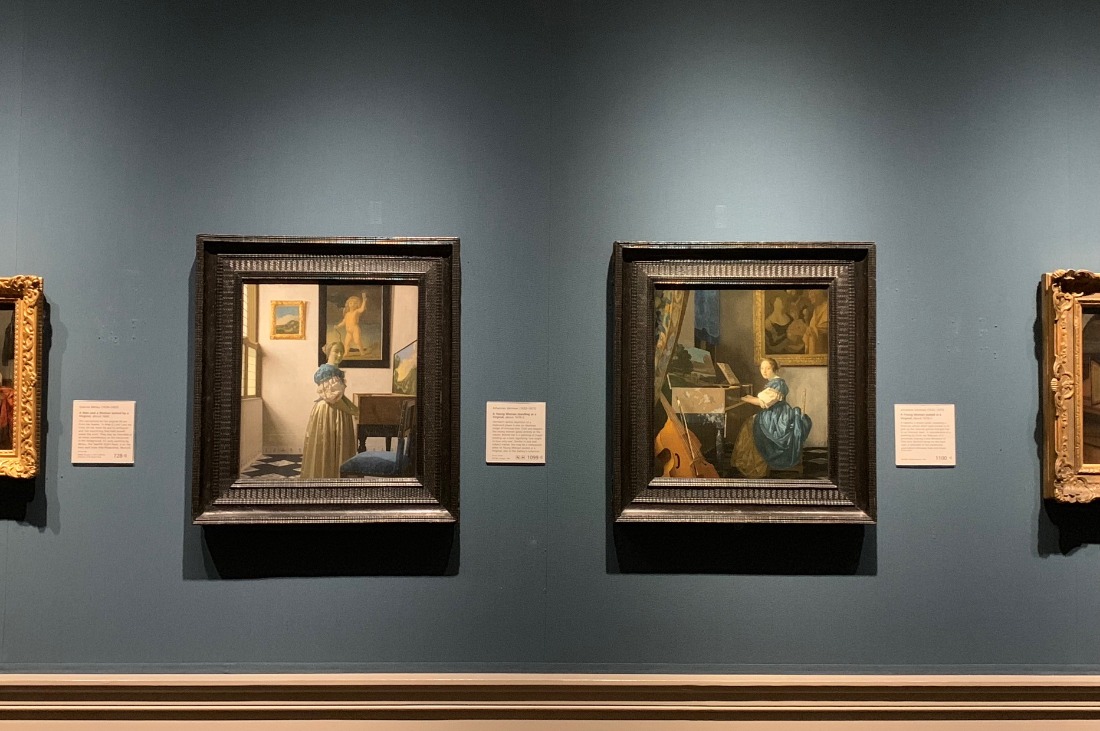

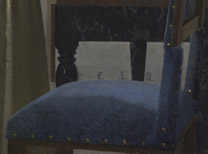



8 thoughts on “All About Vermeer’s Palette”
Hi Elisabeth ,thank you for inviting me to your Art studio life. Study art is my love forever.Vermeer is one of my favorite
Hi Jenny, I am glad that you found Art Studio Life! Vermeer is incredible – there is so much to learn from him!
Hi Elizabeth, thanks for your blogs, I’ve just found them!! Vermeer is one of my favourite artists, I have copied two of his works, ‘The lace maker’ and ‘Young woman with a water pitcher’. What would a modern equivalent of lead tin yellow be?
Hello Margie, I am glad that you found the Art Studio Life blog! Vermeer was an incredible artist. How wonderful you have studied his works by copying. Very good question about the lead tin yellow. For a modern equivalent of the color I would mix cadmium lemon (I use williamsburg) with some lead white. Unfortunately these are both more expensive colors. There are some manufacturers making Lead tin yellow today (Michael Harding and Rublev colors) – though they are also more expensive as well.
Hi ,thanks for the info on vermeer.
Vermeer is one of my favourite painters.
I have painted some of vermeer work,
The lacemaker .and the girl with the pearl earing.
Regards vincent Murphy.
You are very welcome for all the info on Vermeer! Wonderful that you painted some of Vermeer’s work. I got to see the lacemaker in person recently – was an incredible experience getting to see.
Carol.
T hank you for this wonderful information on Vermeer’s paint pallet.
I admire his work.
Hi Carol, I am very glad that you enjoyed the information. I absolutely love Vermeer’s work – so it was a pleasure to put the information together!
Elisabeth